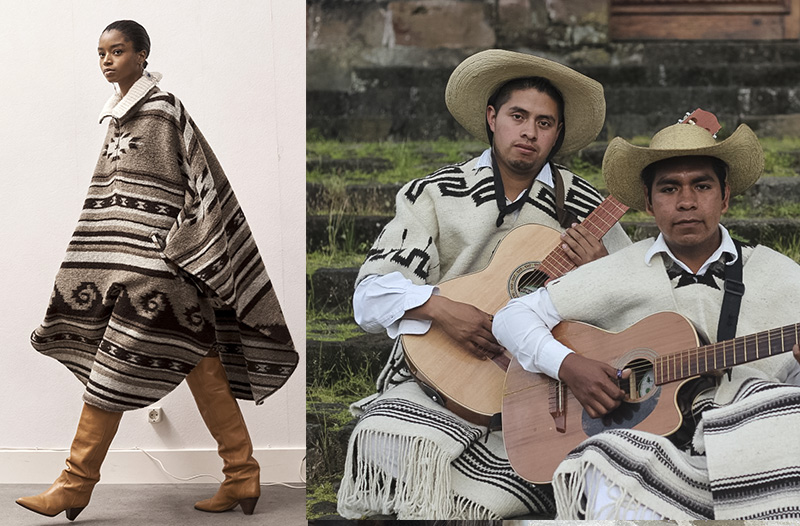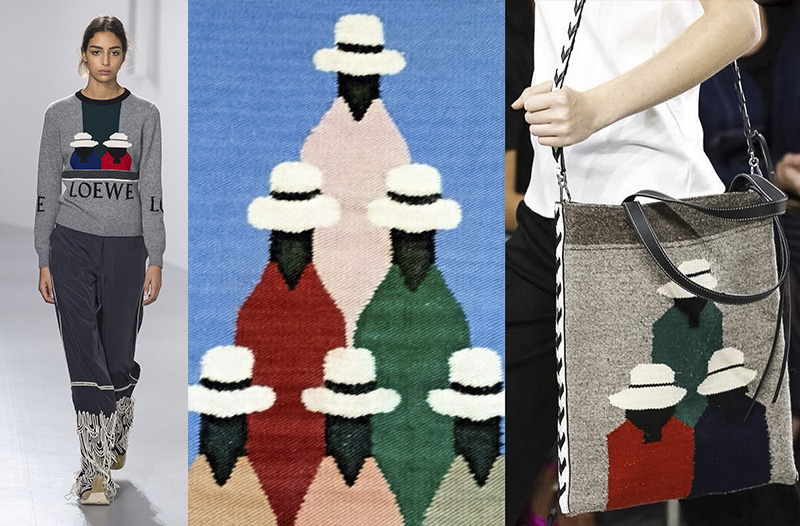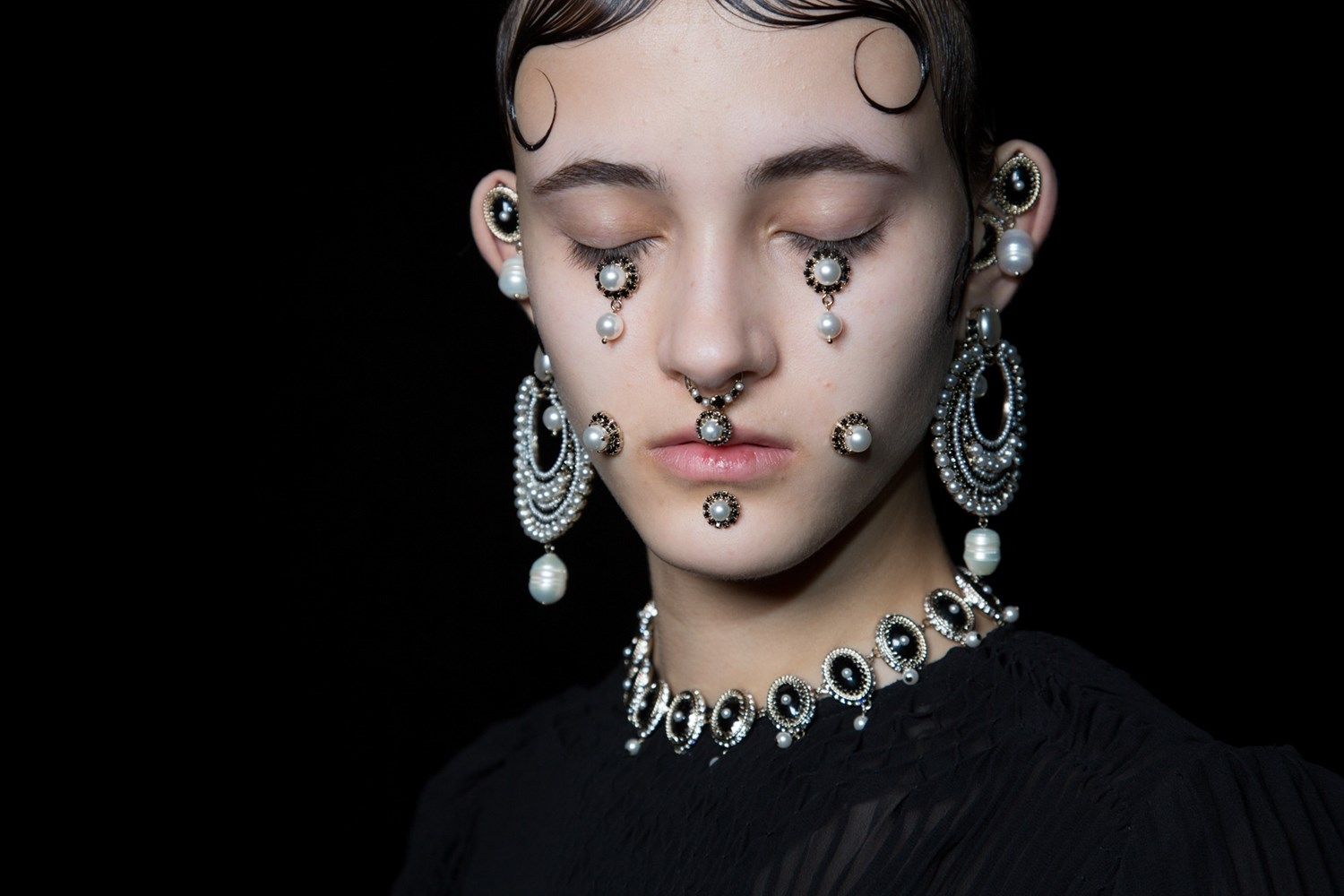In a global world, where physical and virtual limits collapse, we are inundated with information and cultural references that come from everywhere. Everything mixes up, both virtually and physically.
We are so inundated with information that it is almost impossible to know what meaning an object might have. A designer could draw inspiration from a headdress seen on Google, during a trip to Mumbai or a visit to the local flea market. It might not take into consideration where it came from, who made it, why, what was its original use and in what context.
While in a pre-global world no one would have noticed that a symbol was used outside its original context, in a multiconnected world everything is visible. Anyone could – rightly – try to claim ownership.

Cultural appropriation is a phenomenon that sees a dominant culture improperly take possession of a traditional element of a weaker group, depriving it of its original meaning, to gain an economic advantage. Objects of cultural appropriation are cultural manifestations and symbols of culture, that is clothes, dances, music, objects that convey a culture.
Although they tend to be considered symbols of an ancient past, traditional cultural objects are more relevant than ever. They are the expression of the power of self-determination and autonomy of a group, also useful tools for defining relations with the rest of the world. They negotiate and reaffirm cultural and social identity in a post-colonial context, in which the presence and role of these groups are rewritten.
The appropriation and decontextualization of traditional cultural objects by Western cultures can deprive objects of their intrinsic meaning, stripping them of sacredness and power.
The characteristics of cultural appropriation
How to distinguish cultural appropriation? One of its characteristics is the occasion of “clash” and “subtraction” of identifying elements of a culture that can be defined as subordinate, by a hegemonic. For this reason, many scholars consider the phenomenon as a re-proposition of the logic and a heavy legacy of the colonial period.
Contextual and consequent to the subtraction just described is the dislocation of the cultural object from the original context: the symbol ceases to be a manifestation and is reduced to an object or commodity.

The third element is the lack of involvement of the original culture in the production process, marketing or use of the same. This can materialize in the absence of a prior authorization, of a mention as original authors or in the non-recognition of compensation in case of inappropriate or disparaging use.
The phenomenon in the fashion industry
The fashion industry has often been accused of cultural appropriation. It is no stranger to forms of exploitation through which it perpetuates European colonialism, through the economic domination of the work and trade of third world countries to which it commissions cheap labor.
A recent example concerns the protests of workers in Bangladesh following the outbreak of the pandemic. With the closure of stores around the world, the largest manufacturers in the clothing sector have canceled their contracts with labor, interrupting payments. The strong dependence of the third world on the first world appears evident and consequently undeniable.

In fashion, the relationship is even more complex. As is well known, the fetish for foreign cultures goes hand in hand with the very birth of fashion, made of inspiration and reworking. Many times the great European fashion brands have presented collections inspired or contaminated by foreign cultures. The problem arises because individuals belonging to that same culture rarely participate in their conception and production. The major European fashion brands appropriate craft techniques and traditional garments from foreign cultures without any regard or respect, to recontextualize everything, reducing culture to a fetish.
Cases of cultural appropriation in fashion
In 2015 Givenchy dedicates a collection to the style of the South American Cola, the girls who use the look of the women of the 1970s Latin gangs as a means of claiming and taking power. Riccardo Tisci, creative director of the brand, was widely criticized because the collection seemed an attempt to make the culture of South American immigrants harmless and “white wash”.
In 2018, the cover of the first issue of Vogue Arabia featured the US model Gigi Hadid, with an embroidered veil on her face. Director Deena Aljuhani Abudlaziz was accused of attempting to bend a religious object to Western tastes. Covering such a symbol with superficial glamor and not choosing a Middle Eastern model has caused a shower of criticism. Condé Nast then relieved the director of the post.

In 2015, French designer Isabel Marant created a women’s clothing collection by copying the traditional huipil embroidery of the Mexican Mixe population. Marant garments sold for $ 365, the equivalent of $ 4,500, while a traditional huipil dress costs $ 300. huipil. After a legal dispute, the French court ruled that neither Marant nor Antik Batik could use Mixe embroidery anymore. In 2016, then, the congress of the province of Oaxaca, together with UNESCO, defined embroidery, design and the Mixe language as an untouchable cultural heritage.
How to avoid cultural appropriation
There is no mention of cultural appropriation when there is a voluntary act of authorization or transfer of rights. Understanding the importance of the meaning of traditional cultural objects, avoiding debasing it or placing it in the mere sphere of intellectual property, is a good starting point. In this way we avoid causing economic and moral damage.
Twerking, braids, the use of a veil on the head, are gestures that are now part of our daily life. The first and fundamental step is to inquire, and then ask yourself: am I enriching my personal baggage, or am I simply following a trend that I don’t understand?
The beauty of diversity is precisely being able to learn something new, go beyond stereotypes and break down the barriers of prejudice. So much so that respect for the different is maintained, whether they are accessories or religious symbols, it can only do good to our society, also learning about what one is afraid of.





